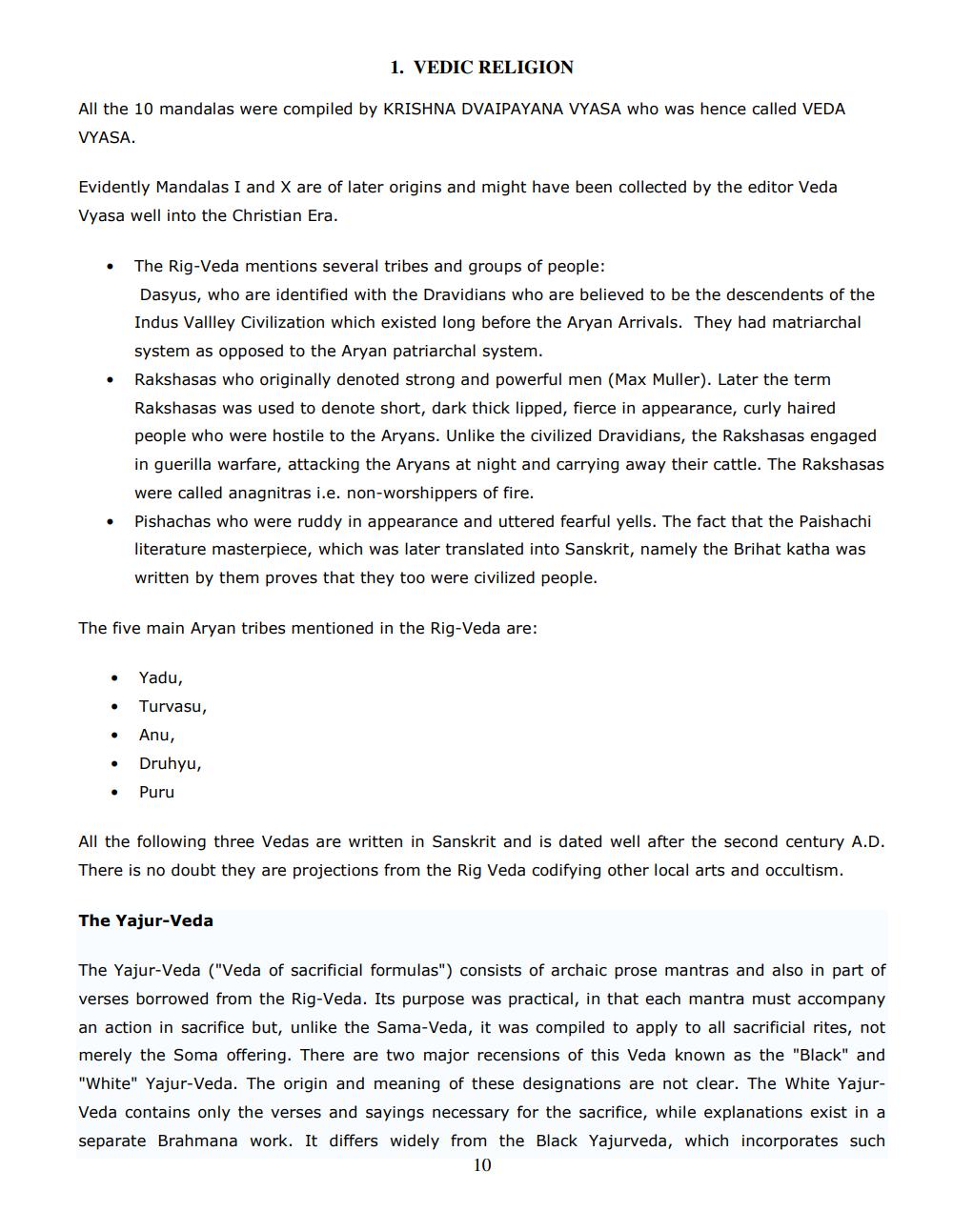________________
1. VEDIC RELIGION
All the 10 mandalas were compiled by KRISHNA DVAIPAYANA VYASA who was hence called VEDA VYASA.
Evidently Mandalas I and X are of later origins and might have been collected by the editor Veda Vyasa well into the Christian Era.
The Rig Veda mentions several tribes and groups of people: Dasyus, who are identified with the Dravidians who are believed to be the descendents of the Indus Vallley Civilization which existed long before the Aryan Arrivals. They had matriarchal system as opposed to the Aryan patriarchal system. Rakshasas who originally denoted strong and powerful men (Max Muller). Later the term Rakshasas was used to denote short, dark thick lipped, fierce in appearance, curly haired people who were hostile to the Aryans. Unlike the civilized Dravidians, the Rakshasas engaged in guerilla warfare, attacking the Aryans at night and carrying away their cattle. The Rakshasas were called anagnitras i.e. non-worshippers of fire. Pishachas who were ruddy in appearance and uttered fearful yells. The fact that the Paishachi literature masterpiece, which was later translated into Sanskrit, namely the Brihat katha was written by them proves that they too were civilized people.
The five main Aryan tribes mentioned in the Rig Veda are:
Yadu, Turvasu, Anu, Druhyu, Puru
•
All the following three Vedas are written in Sanskrit and is dated well after the second century A.D. There is no doubt they are projections from the Rig Veda codifying other local arts and occultism.
The Yajur-Veda
The Yajur Veda ("Veda of sacrificial formulas") consists of archaic prose mantras and also in part of verses borrowed from the Rig Veda. Its purpose was practical, in that each mantra must accompany an action in sacrifice but, unlike the Sama-Veda, it was compiled to apply to all sacrificial rites, not merely the Soma offering. There are two major recensions of this Veda known as the "Black" and "White" Yajur Veda. The origin and meaning of these designations are not clear. The White YajurVeda contains only the verses and sayings necessary for the sacrifice, while explanations exist in a separate Brahmana work. It differs widely from the Black Yajurveda, which incorporates such
10




